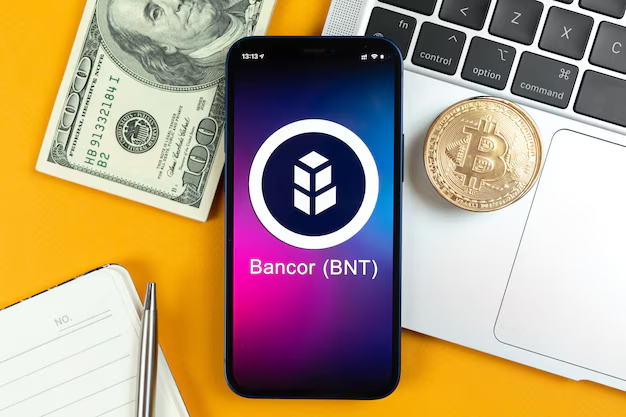Exploring XRP ETFs: A Comprehensive Guide to Investing
With the rapid evolution of digital finance, cryptocurrency has shifted from a niche market to a mainstream investment avenue. Among the many crypto assets, Ripple's XRP stands out due to its ambitious global payments network. For investors interested in dipping their toes into this digital currency without directly purchasing it, XRP Exchange-Traded Funds (ETFs) offer an appealing alternative. This guide walks you through the essentials of buying an XRP ETF, exploring related subtopics and offering practical insights along the way.
Understanding XRP and Its Appeal
What is XRP?
XRP is a digital currency developed by Ripple Labs designed to facilitate quick, cost-effective international money transfers. Unlike Bitcoin, which aims to replace traditional currency, XRP works with existing infrastructure to allow faster and cheaper transactions across the globe.
Why Invest in XRP?
Speed and Cost-Effectiveness: XRP transactions are significantly quicker and cheaper compared to traditional banking transactions and even other cryptocurrencies.
Utility in Financial Institutions: Many financial institutions utilize XRP for cross-border payments, highlighting its practical applications beyond speculative trading.
Growth Potential: As global commerce embraces digital assets, XRP could see increased demand and usage.
Why Choose an XRP ETF?
What is an ETF?
An Exchange-Traded Fund (ETF) is a type of investment fund traded on stock exchanges, similar to stocks. ETFs hold assets such as stocks, commodities, or bonds and generally operate with an arbitrage mechanism designed to keep the trading close to its net asset value.
Benefits of XRP ETFs
Diversification: ETFs provide exposure to a range of assets, allowing investors to diversify their holdings without purchasing each asset individually.
Regulated Environment: Unlike direct crypto trading, ETFs offer a degree of regulation and investor protection as they are typically traded on well-regulated stock exchanges.
Simplicity: Investors do not need a crypto wallet or navigate crypto exchanges; buying an XRP ETF is as straightforward as buying any other stock.
How to Buy an XRP ETF
Step 1: Research and Choose the Right ETF
Begin by researching available XRP ETFs. Consider factors such as:
- Fund Performance: Look at historical returns and compare them to other ETFs.
- Expense Ratio: Consider the management fees associated with the fund.
- Liquidity: Ensure the ETF is sufficiently liquid, allowing ease of buying and selling.
Step 2: Open a Brokerage Account
To invest in an ETF, you will need a brokerage account. Here are steps to open one:
Choose a Broker: Look for a reputable brokerage that offers a user-friendly platform, reasonable fees, and robust customer support.
Account Setup: Provide necessary personal information, comply with any identity verification requirements, and link your bank account for funds transfer.
Fund Your Account: Decide on an initial deposit, considering the minimum balance required by your broker and your investment allocation plan.
Step 3: Place Your Order
Once your account is funded:
Search for the ETF Ticker: Use the ticker symbol associated with the XRP ETF you're interested in.
Order Type and Quantity: Choose the type of order, such as market or limit, and specify the number of shares you want to purchase.
Execute the Order: Review your order for accuracy before executing. Confirm when your order is complete.
Step 4: Monitor Your Investment
Keep an eye on your investment strategy and make adjustments as necessary based on market conditions, personal financial goals, and news related to cryptocurrency and XRP developments.
Related Considerations
Risks Involved
- Market Volatility: Cryptocurrencies are known for their volatility, which can extend to ETFs that encompass them.
- Regulations and Legal Risks: The regulatory landscape for cryptocurrencies is constantly evolving, which can impact the performance of XRP ETFs.
Alternative Investments
- Cryptocurrency Direct Purchase: Purchasing XRP directly is an option for those comfortable with managing digital assets.
- Other Crypto-Backed ETFs: Consider broadening your investments with ETFs that track different cryptocurrencies or blockchain technology indices.
Tax Implications
Investing in ETFs, including those tied to cryptocurrencies, may have tax implications. Gains and dividends may be taxable, so it is wise to consult a tax professional to understand your tax obligations.
Practical Tips for Prospective Investors
Stay Informed: Continuously educate yourself on cryptocurrency markets, regulatory updates, and financial news to make informed investment decisions.
Diversify Your Portfolio: Don't put all your eggs in one basket; diversify across various assets to mitigate risks.
Consider Long-Term: Understand that cryptocurrency and related ETFs can exhibit significant short-term fluctuations; optimal strategies often involve long-term holding.
Key Takeaways Summary
Here’s a quick rundown of steps and considerations:
- 🗝 Choose Wisely: Research ETFs carefully and choose based on performance, fees, and fit for your portfolio.
- 📈 Use Trusted Platforms: Open an account with a reputable broker to ensure fair transaction practices.
- 💡 Be Informed: Stay updated on regulatory changes and the cryptocurrency market for effective risk management.
- 📊 Diversify and Monitor: Maintain a diversified portfolio and monitor it regularly to realign with your investment goals.
By understanding the markets and carefully considering your options, investing in an XRP ETF can be a strategic addition to your financial endeavors.
